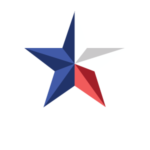Navigating the world of auto insurance can be daunting, especially with the myriad of options and requirements that vary from state to state. In Texas, understanding the levels of auto insurance is crucial for every driver. This guide will help demystify the different types of coverage available and explain what each one entails.
1. Liability Insurance
Liability insurance is the minimum coverage required by Texas law. It is designed to cover damages and injuries you may cause to other people in an accident where you are at fault. There are two main components:
- Bodily Injury Liability (BIL): This covers medical expenses, lost wages, and pain and suffering of the other party involved in the accident.
- Property Damage Liability (PDL): This covers the cost of repairing or replacing the other party’s vehicle or property damaged in the accident.
In Texas, the minimum liability limits are often referred to as 30/60/25. This means:
- $30,000 for bodily injury per person,
- $60,000 total for bodily injury per accident, and
- $25,000 for property damage per accident.
2. Personal Injury Protection (PIP)
Personal Injury Protection is optional in Texas, though insurance companies are required to offer it. PIP covers medical expenses, 80% of lost wages, and the cost of household services if you’re unable to perform them due to the accident, regardless of who is at fault. The standard PIP coverage amount in Texas is $2,500 per person, but you can opt for higher limits.
3. Uninsured/Underinsured Motorist Coverage (UM/UIM)
Uninsured/Underinsured Motorist Coverage provides protection if you are involved in an accident with a driver who has no insurance or insufficient coverage to pay for your damages. This coverage is optional but highly recommended, as it can cover both bodily injury and property damage.
- Uninsured Motorist Bodily Injury (UMBI): Covers medical expenses, lost wages, and other injury-related costs.
- Uninsured Motorist Property Damage (UMPD): Covers repair costs to your vehicle or property.
4. Collision Coverage
Collision coverage is optional and covers the cost of repairing or replacing your vehicle after an accident, regardless of who is at fault. This is particularly important if you have a newer or more expensive vehicle. Collision coverage typically comes with a deductible, which is the amount you pay out of pocket before your insurance kicks in.
5. Comprehensive Coverage
Comprehensive coverage is another optional coverage that protects your vehicle against non-collision-related incidents, such as theft, vandalism, natural disasters, and hitting an animal. Like collision coverage, comprehensive coverage comes with a deductible.
6. Medical Payments Coverage (MedPay)
Medical Payments Coverage is similar to PIP but generally provides less extensive coverage. It pays for medical expenses for you and your passengers, regardless of fault. Unlike PIP, MedPay does not cover lost wages or other non-medical expenses.
7. Rental Reimbursement Coverage
Rental Reimbursement Coverage is optional and helps pay for a rental car while your vehicle is being repaired after a covered accident. This coverage can be particularly useful if you rely on your vehicle for daily transportation.
8. Towing and Labor Coverage
Towing and Labor Coverage is an optional add-on that covers the cost of towing your vehicle and some basic roadside assistance, such as changing a flat tire or jump-starting your battery.
Choosing the Right Coverage
Selecting the right level of auto insurance depends on various factors, including the value of your vehicle, your financial situation, and your tolerance for risk. While meeting the minimum liability requirements is essential to stay legal, additional coverage options can provide valuable protection and peace of mind.
Key tips:
- Assess your needs: Consider factors like your vehicle’s value, driving habits, and financial situation.
- Shop around: Compare quotes from different insurers to find the best rates and coverage options.
- Review your policy: Regularly review and update your policy to ensure it meets your current needs.




